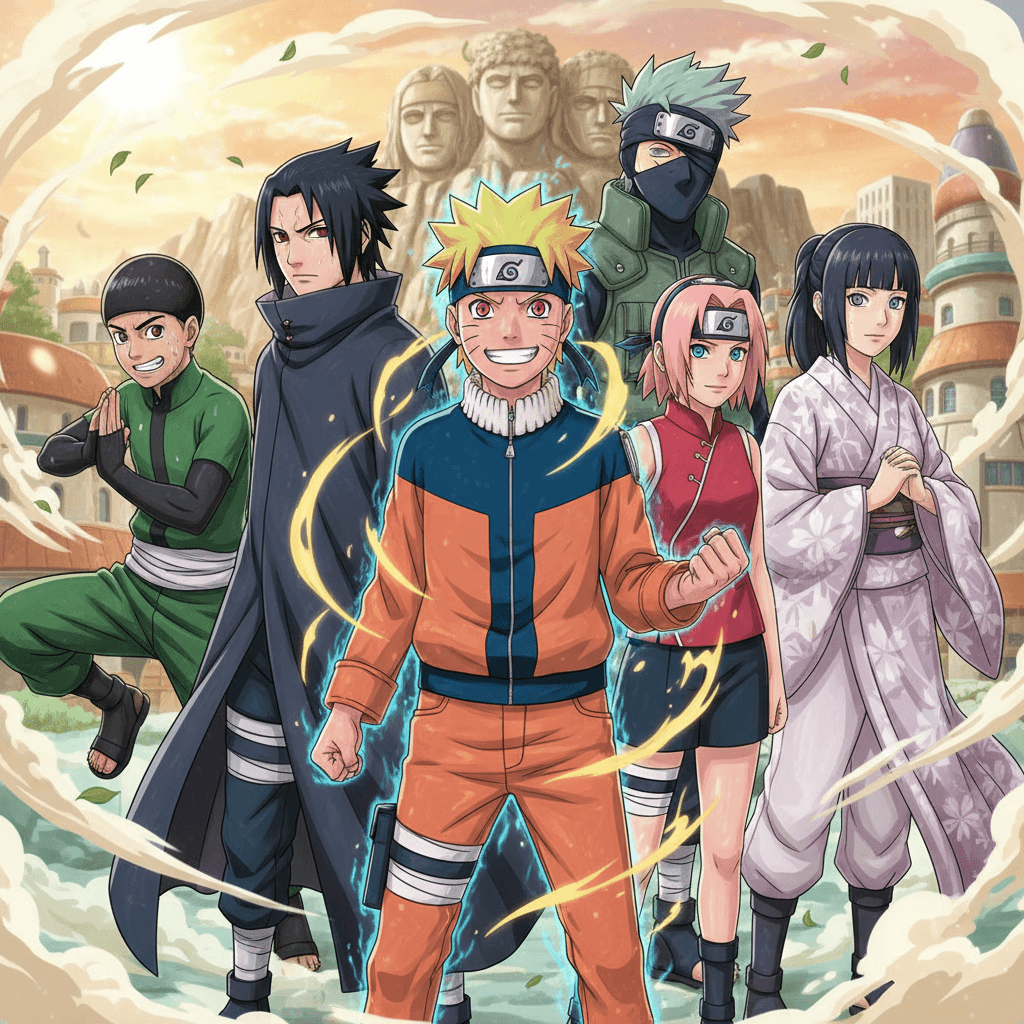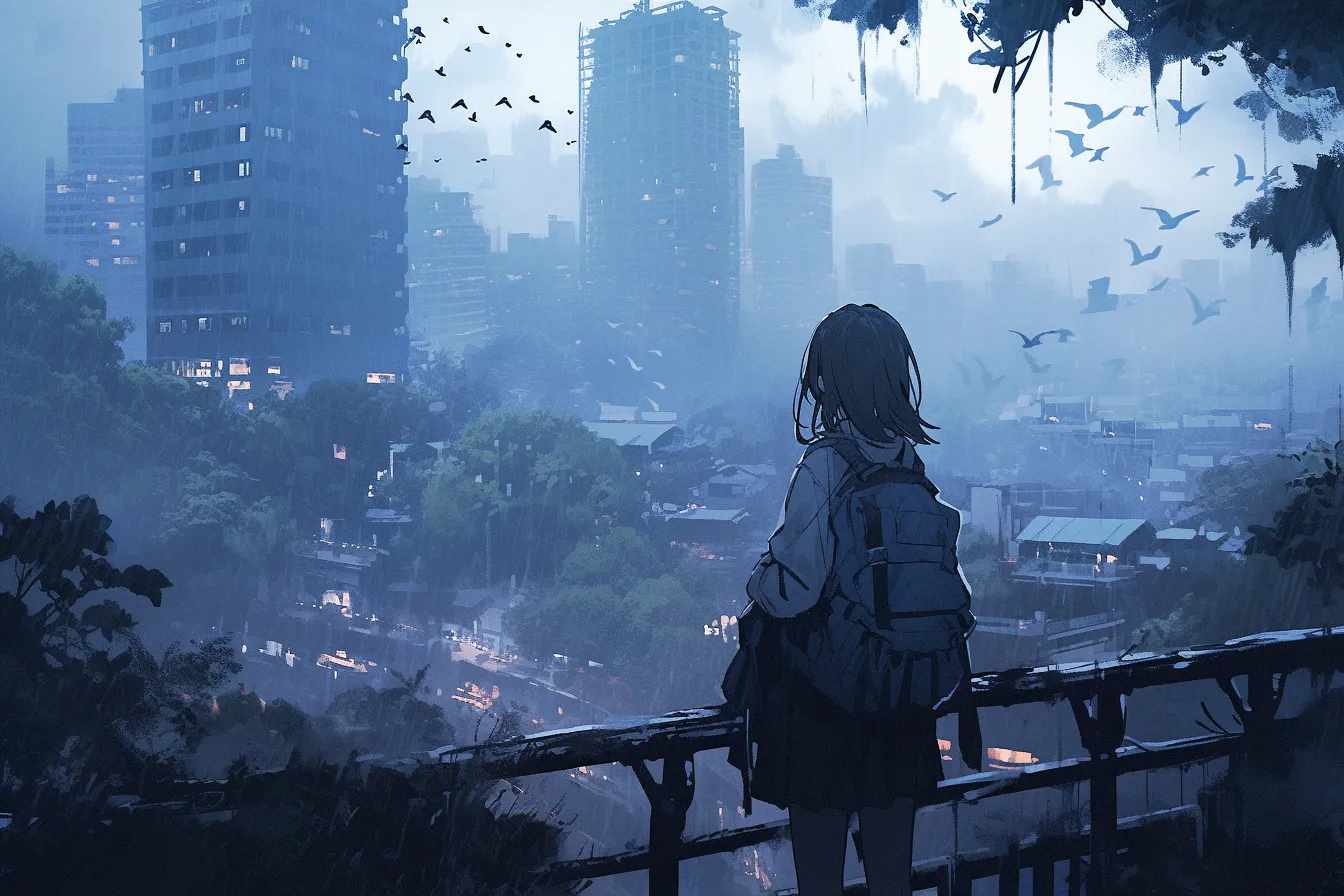Fashion Statements of Anime Characters in Naruto

Naruto Uzumaki in his bright orange jumpsuit radiates energy and determination, embodying his lively spirit. Sasuke Uchiha in dark attire conveys brooding intensity, while Sakura Haruno sports a red headband that symbolizes her growth as a kunoichi. Kakashi Hatake’s mask adds mystery, complemented by his casual shinobi vest. Rock Lee’s vibrant green jumpsuit showcases his energetic nature, contrasting with traditional ninja aesthetics. Hinata Hyuga’s gentle demeanor shines through her soft, floral kimono-inspired outfit in Naruto
Fashion Statements of Anime Characters in Naruto
In the vibrant world of anime, characters are often defined by their unique fashion choices that reflect their personalities and status. “Naruto,” one of the most beloved anime series, showcases a diverse array of characters, each with distinctive styles that contribute to their identities. From ninja uniforms to casual wear, the fashion statements in “Naruto” are as integral to the storytelling as the plot itself.
The Iconic Ninja Uniforms
At the core of “Naruto” are the iconic ninja uniforms worn by its characters. These outfits not only serve a functional purpose but also symbolize allegiance to various villages and clans. For instance, Naruto Uzumaki’s orange jumpsuit is not just a fashion choice; it’s a declaration of his lively spirit and determination to stand out. The color orange represents energy and enthusiasm, perfectly mirroring Naruto’s personality.
Conversely, Sasuke Uchiha’s dark attire reflects the brooding nature of his character. His choice of clothing signifies his internal struggles and desire for power. The contrast between these two main characters’ outfits highlights their divergent paths and philosophies throughout the series.
Accessories That Tell Stories
Accessories play a significant role in defining character identities in “Naruto.” Whether it’s Sakura Haruno’s forehead protector or Kakashi Hatake’s mask, these elements add depth to their personalities. Sakura’s choice to wear her protector as a headband signifies her growth from a timid girl into a strong kunoichi.
Kakashi’s mask, on the other hand, adds an air of mystery around him. His enigmatic persona is further enhanced by his casual yet stylish attire, which often includes a standard shinobi vest paired with casual pants. The mask not only conceals his face but also represents the burdens he carries from his past.
Traditional vs. Modern Styles
The design of traditional ninja attire in “Naruto” contrasts sharply with modern fashion trends seen among certain characters. While many ninjas stick to the classic shinobi look, others embrace contemporary styles that reflect current trends within anime culture.
For example, characters like Rock Lee exhibit traditional ninja aesthetics but blend them with modern flair through vibrant colors and patterns. His green jumpsuit stands out against the generally muted tones of other ninjas, embodying his energetic personality and unyielding spirit.
The Influence of Cultural Elements
Japanese culture plays a significant role in shaping the fashion statements seen in “Naruto.” Many outfits incorporate elements inspired by historical samurai clothing or traditional Japanese garments such as kimono or hakama. This cultural infusion gives depth to characters and elevates their backstories.
Hinata Hyuga’s gentle demeanor is mirrored in her soft-colored kimono-inspired outfit that reflects her shy yet resilient nature. The subtle floral patterns on her clothing signify her connection to nature and her nurturing personality traits.
Fashion Forward: New Generation
As “Naruto” progresses into its sequel series “Boruto: Naruto Next Generations,” we see an evolution in character designs that cater to a new generation while staying true to their roots. With this transition comes experimentation with fashion choices that resonate with modern youth culture.
Characters like Boruto Uzumaki blend traditional shinobi elements with urban streetwear aesthetics. His signature blue jacket paired with trendy accessories makes him relatable to younger audiences while still honoring his heritage as Naruto’s son.
Unconventional Choices: Embracing Individuality
One standout example of individuality can be found in characters like Shikamaru Nara. His laid-back style reflects his carefree attitude toward life while still fulfilling his role as a strategist within Team 10. By opting for comfortable clothing over flashy ninja gear, he emphasizes practicality over style—a testament to his character development throughout the series.
Interestingly enough, some fan theories suggest that items such as “nano-banana” could be integrated into future designs for comedic effect or functionality within battles—showcasing how quirky elements can enhance character dynamics without compromising on style.
Conclusion
The fashion statements made by characters in “Naruto” serve more than just aesthetic purposes; they provide insight into their personalities, backgrounds, and growth throughout the series. As we explore these diverse styles—from classic ninja uniforms to modern interpretations—we appreciate how each character’s wardrobe contributes significantly to their narrative arc and connection with viewers.
Through vibrant colors, unique accessories, cultural influences, and personal flair, “Naruto” continues to inspire countless fans worldwide—not just through its storylines but also through its unforgettable fashion choices that define its beloved characters.
💬 The comment system is temporarily disabled.
If you have any questions, please contact us through other means.
